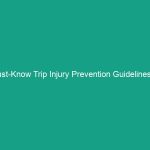Introduction
In today’s bustling world, noise pollution has become an increasingly pressing issue, especially within workplace environments. Noise pollution not only affects the quality of life for employees but can also lead to significant health issues and reduced productivity. As part of the Health, Safety, and Environment (HSE) framework, understanding noise pollution and control is essential for creating a safe and conducive work environment. This article aims to provide comprehensive guidelines on noise pollution and control, offering insights into regulatory frameworks, best practices, case studies, and future trends.
Understanding Noise Pollution
Noise pollution refers to the excessive or harmful levels of noise in the environment, often caused by industrial activities, transportation, and urban development. It can lead to various health issues such as hearing loss, stress, sleep disturbances, and reduced productivity. The World Health Organization (WHO) has recognized noise pollution as a significant environmental risk factor, emphasizing the need for effective Control Measures.
Sources of Noise Pollution
Understanding the sources of noise pollution is crucial for effective control. Common sources include:
- Industrial Operations: Factories and manufacturing plants often generate high levels of noise from machinery and equipment.
- Transportation: Road, rail, and air traffic contribute significantly to environmental noise pollution.
- Construction Activities: Construction sites are notorious for generating excessive noise due to heavy machinery and equipment.
- Urban Environments: The hustle and bustle of city life, including traffic, social gatherings, and nightlife, contribute to persistent noise levels.
Health Impacts of Noise Pollution
Noise pollution can have profound Effects on physical and mental health. Studies have shown that prolonged exposure to high noise levels can cause:
- Hearing Loss: Continuous exposure to loud noises can lead to irreversible hearing damage.
- Cardiovascular Issues: Increased stress levels caused by noise can lead to heart diseases and hypertension.
- Sleep Disturbances: Noise can disrupt sleep patterns, leading to chronic fatigue and decreased productivity.
- Mental Health Problems: Prolonged exposure to noise can contribute to anxiety, depression, and reduced overall well-being.
Regulatory Frameworks for Noise Control
Various Regulations and Standards exist to manage noise pollution in the workplace. Familiarizing yourself with these regulations is vital for compliance and ensuring employee Safety.
International Standards
The International Organization for Standardization (ISO) has established several standards related to noise measurement and control, including:
- ISO 1996: This standard provides guidelines for the assessment of environmental noise.
- ISO 9612: It outlines Procedures for measuring occupational noise exposure.
National Regulations
Each country has its own set of regulations governing noise control in workplaces. For example:
- Occupational Safety and Health Administration (OSHA) in the USA: osha sets permissible noise exposure limits to protect workers’ hearing.
- Health and Safety Executive (HSE) in the UK: HSE provides guidelines on managing noise risks in the workplace.
Local Regulations
Many cities and municipalities have their own noise ordinances, which may impose stricter regulations than national standards. Employers should ensure compliance with local noise control laws to avoid penalties and ensure a safe working environment.
Best Practices for Noise Pollution Control
Implementing effective noise Control Measures is essential for minimizing noise pollution in the workplace. Here are some Best Practices to consider:
Conduct Noise Assessments
Regular noise assessments help identify areas where noise levels exceed acceptable limits. Utilizing sound level meters can provide accurate readings, enabling employers to make informed decisions regarding noise control strategies.
Implement Engineering Controls
Engineering controls are often the most effective way to reduce noise at the source. Strategies include:
- Sound Insulation: Use sound-absorbing materials in walls, ceilings, and floors.
- Machine Maintenance: Regularly maintain machinery to prevent excessive noise due to wear and tear.
- Quiet Equipment: Invest in quieter machinery and tools where possible.
Administrative Controls
Administrative controls involve changing workplace policies to reduce exposure to noise. This can include:
- Job Rotation: Rotate employees among different tasks to limit their exposure to high noise levels.
- Work Scheduling: Schedule noisy activities during off-peak hours to minimize overall exposure.
- Training and Awareness: Educate employees about noise Hazards and effective Personal Protective Equipment (PPE) usage.
Personal Protective Equipment (PPE)
When noise levels cannot be adequately controlled, providing appropriate PPE, such as earplugs or earmuffs, is essential. Employees should be trained on the correct usage and maintenance of PPE to ensure maximum protection.
Case Studies of Successful Noise Control
Examining real-world examples of successful noise control initiatives can provide valuable insights into effective strategies and their implementation.
Case Study 1: Manufacturing Plant Noise Reduction
In a large manufacturing facility, management noticed a significant number of hearing-related complaints among employees. Following a comprehensive noise assessment, they implemented several strategies, including:
- Installing sound-absorbing panels throughout the production area.
- Replacing older machines with quieter models.
- Implementing a hearing conservation program, including regular hearing tests for employees.
As a result, the facility reported a substantial decrease in noise-related complaints and improved employee satisfaction.
Case Study 2: Construction Site Noise Management
A construction company faced backlash from surrounding neighborhoods due to high noise levels during projects. To address these concerns, they adopted a community-centric approach:
- Informing residents about the project timeline and potential noise disturbances.
- Implementing noise barriers around the construction site.
- Using quieter machinery and scheduling noisy activities during the day.
This proactive approach not only improved community relations but also enhanced worker efficiency.
Challenges in Noise Pollution Control
Despite the implementation of various noise control measures, several challenges persist in managing noise pollution effectively.
Technological Limitations
While advancements in technology have led to quieter machinery, older equipment often remains in use due to cost constraints. This can pose a significant challenge for organizations striving to meet noise control regulations.
Employee Compliance
Ensuring employee compliance with noise control measures, such as wearing PPE, can be difficult. Providing adequate Training and fostering a culture of safety is crucial for encouraging adherence to established protocols.
Cost Implications
Implementing noise control measures often requires substantial financial investment, which can deter organizations from taking necessary actions. However, the long-term Benefits, including enhanced employee health and productivity, often outweigh the initial costs.
Future Trends in Noise Pollution and Control
As awareness of noise pollution continues to grow, several trends are emerging that may shape the future of noise control.
Increased Regulation
Governments and regulatory bodies are likely to impose stricter noise control regulations in response to growing concerns about public health. Organizations must stay informed about these changes to ensure compliance and avoid penalties.
Technological Innovations
The development of new technologies aimed at noise reduction, such as advanced sound-absorbing materials and quieter machinery, is expected to improve noise control efforts significantly. Organizations should stay updated on these innovations and consider integrating them into their practices.
Holistic Approaches to Workplace Design
Future workplace designs may prioritize noise reduction as a fundamental aspect, incorporating open spaces, soundproof areas, and innovative layouts that minimize noise pollution. This holistic approach can lead to improved employee well-being and productivity.
Conclusion
Noise pollution is a critical issue that can significantly impact employee health, safety, and productivity. Understanding the sources and effects of noise pollution, along with implementing effective control measures, is essential for ensuring a safe workplace. By adhering to regulatory frameworks, adopting Best Practices, and staying informed about future trends, organizations can take proactive steps to mitigate noise pollution. It is crucial for both employers and employees to be aware of their roles in maintaining a safe and healthy work environment. We encourage all stakeholders to prioritize noise pollution and control, fostering a culture of health and safety in every workplace.


